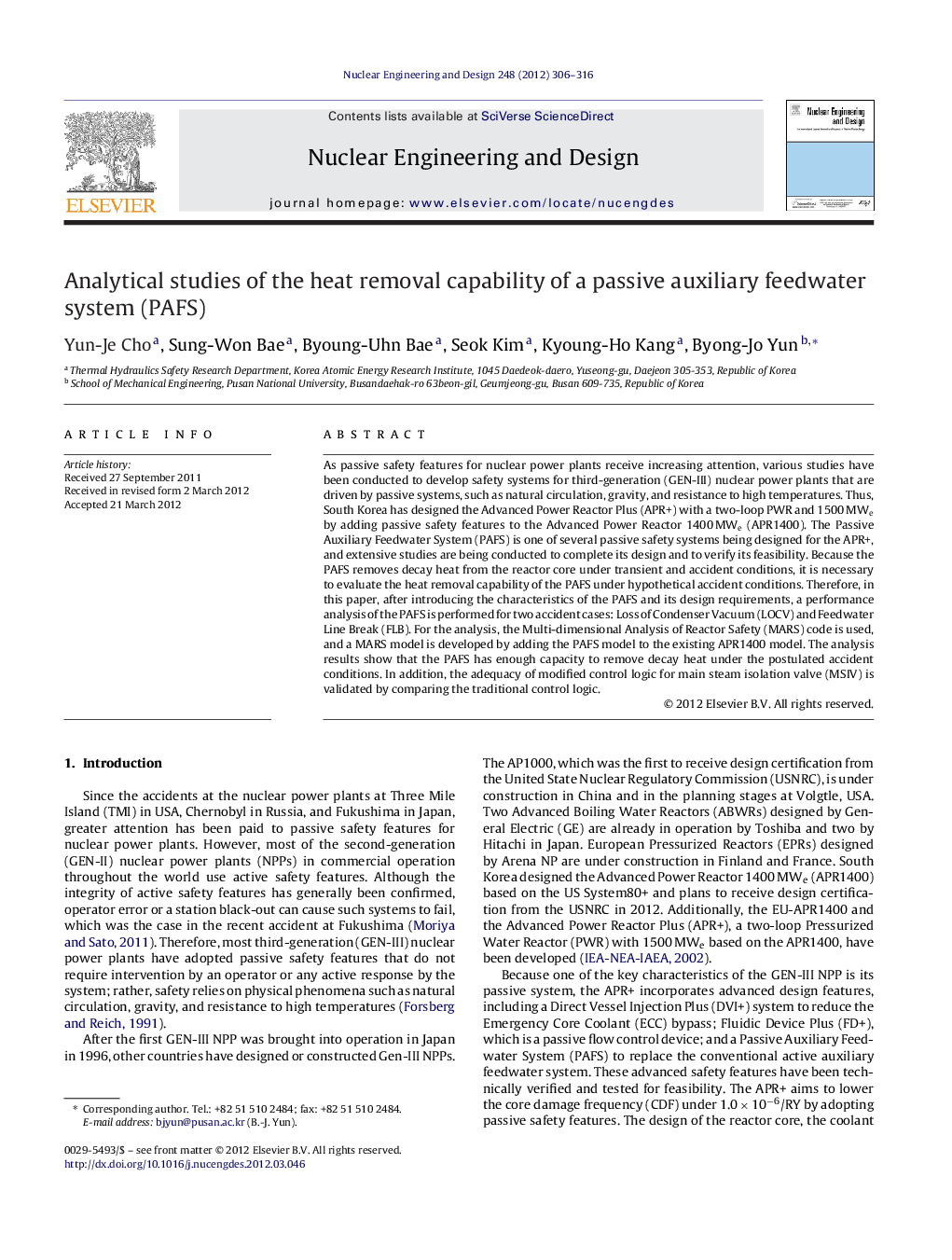| کد مقاله | کد نشریه | سال انتشار | مقاله انگلیسی | نسخه تمام متن |
|---|---|---|---|---|
| 297235 | 511751 | 2012 | 11 صفحه PDF | دانلود رایگان |

As passive safety features for nuclear power plants receive increasing attention, various studies have been conducted to develop safety systems for third-generation (GEN-III) nuclear power plants that are driven by passive systems, such as natural circulation, gravity, and resistance to high temperatures. Thus, South Korea has designed the Advanced Power Reactor Plus (APR+) with a two-loop PWR and 1500 MWe by adding passive safety features to the Advanced Power Reactor 1400 MWe (APR1400). The Passive Auxiliary Feedwater System (PAFS) is one of several passive safety systems being designed for the APR+, and extensive studies are being conducted to complete its design and to verify its feasibility. Because the PAFS removes decay heat from the reactor core under transient and accident conditions, it is necessary to evaluate the heat removal capability of the PAFS under hypothetical accident conditions. Therefore, in this paper, after introducing the characteristics of the PAFS and its design requirements, a performance analysis of the PAFS is performed for two accident cases: Loss of Condenser Vacuum (LOCV) and Feedwater Line Break (FLB). For the analysis, the Multi-dimensional Analysis of Reactor Safety (MARS) code is used, and a MARS model is developed by adding the PAFS model to the existing APR1400 model. The analysis results show that the PAFS has enough capacity to remove decay heat under the postulated accident conditions. In addition, the adequacy of modified control logic for main steam isolation valve (MSIV) is validated by comparing the traditional control logic.
► The MARS model was developed by adding the PAFS model to the APR1400 model.
► Analysis results show that the capacity of PAFS is sufficient to remove the decay heat in the LOCV and FLB accident cases.
► The PAFS control logic for MSIV has the advantages of maintaining the feedwater inventory in the intact side.
Journal: Nuclear Engineering and Design - Volume 248, July 2012, Pages 306–316